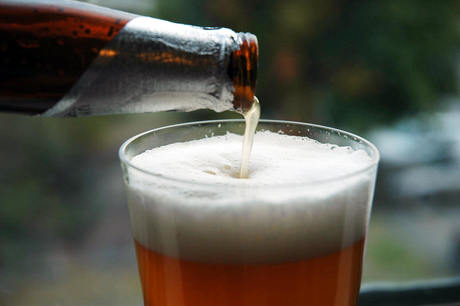The history (and personality) of yeast

Belgian researchers have found that yeasts used for beer and winemaking were domesticated in the 16th century, around 100 years before the discovery of microbes. The researchers have describe a family tree of these microbes, with the resulting genetic relationships also revealing clues as to who the earliest beer brewers were and how humans have shaped the organism’s development.
Teams from VIB, KU Leuven and Ghent University analysed the genomes and fermentation characteristics of more than 150 industrial yeasts used to produce different beers, wines and bread. The results show that the hundreds of beer and wine yeasts available today are the result of the actions of the brewers and winemakers from history.
Art becomes science
“The flavour of the beer we drink largely depends on yeast,” explained Kevin Verstrepen, a yeast geneticist at the University of Leuven and VIB. “We’re drinking the best beers now because ancient brewers were smart enough to start breeding yeast before they knew what they were doing. It was really an art.”
Verstrepen explained that ancient brewers, winemakers and bakers often practised ‘backslopping’, a technique where a small part of a previous well-fermented dough or brew was kept apart to mix it with a new batch, to make the fermentation process quicker and more consistent. Without realising what they were doing exactly, these ancient craftsmen were effectively selecting and transferring yeast cultures from one batch to the next, allowing the microbes to continuously grow and adapt to man-made industrial environments.
Why wine is ‘wilder’ than beer
Fascinatingly, beer yeasts show stronger signs of domestication than wine yeasts, most likely because they happily lived in the brewery throughout the year and lost all contact with their feral family members. While wine yeasts share their origins with beer yeasts, they show fewer signs of domestication, probably because wine yeasts are only used to ferment grape juice once a year, and survive in and around the winery for the rest of the year, where they may interbreed with feral yeasts.
In order to study a large variety of beers and yeasts, the Belgian team joined forces with White Labs, an American company that specialises in selling different yeasts to craft brewers. The scientists found that yeast strains were selected to provide beers with desired industrial characteristics.
Bioinformatics team leader Steven Maere from VIB-UGent said: “The consequences of four centuries of domestication were very clear in the DNA of industrial yeasts.”
In particular, the researchers found evidence for amplification of genes involved in metabolising typical beer sugars and selection against production of 4VG, an undesirable flavour compound produced by most natural yeasts.
Tracing the family tree
According to the analysis, the industrial yeast used today came from only a few ancestral strains. Five large groups separated out genetically, with strains mainly clustered together according to their industrial purpose. Geographic boundaries further divided each category: in one grouping of beer yeast, for example, the strains from Belgium and Germany were closely related, but separate from those in the UK and US.

The new study could allow the breeding of even better yeast variants. The scientists are using the genome sequences to select hybrids that combine beneficial DNA regions from several existing beer and wine yeasts.
“Mapping out the genome structure of yeasts in food or drinks allows us to better understand the mechanics and applications of yeasts. As a result, it opens up new possibilities to breed yeasts to enhance flavours, aromas or conservation techniques,” said Kevin Verstrepen.
The results are published in the scientific journal Cell.
Onion producer redevelops its post-harvest operations
Recognising a need to improve the efficiency of its post-harvest operations whilst maintaining...
Carrot wash line processes 40 tons per hour
The Lamattina carrot wash line processes 40 tons per hour (with a capability up to 60 tons per...
How to prevent food factory fires with smarter machine monitoring
Food processors can deter fire-prone production conditions with testing to ensure safety and...














